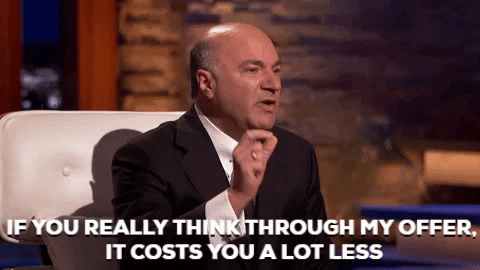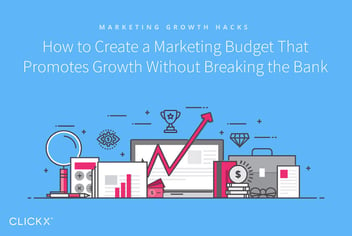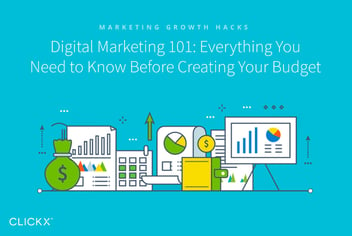Use Your Marketing Team’s Strengths to Save Money

When creating your digital marketing strategy, it’s smart to be creative about how you promote your products and services online. However, if you reach too far out of the box, you may enter new territory that you don’t have the experience to deal with. This can be expensive, complicated, and risky—especially if you’re trying to keep your budget low.
Any time you consider a new marketing technique, you want to think about how it will affect your budget. If you don’t have the team members to execute your plans, you’ll need to spend extra cash to hire, train, or outsource skilled employees. Instead, you can save some money and increase your chances of success by crafting your digital marketing strategy around the skillset of your existing marketing team.
Let’s take a look at how you can use your marketing team’s strengths to your advantage!
Key Takeaways:
- Knowing your team’s most valuable attributes will help you understand what campaigns you can implement most effectively.
- You should work together as a team to develop creative marketing campaigns that your marketing department can collaborate on.
- Running a cost-benefit analysis will help you identify which campaigns will bring the highest return on your investment.
Step 1: Understand Your Team’s Most Valuable Attributes
In order to create a marketing strategy that plays to your team members’ strengths and key attributes, you first need to understand what they’re capable of achieving. Once you know the various skills of your marketing team, you’ll be able to use those strengths throughout your marketing strategy.
There are a few ways you can evaluate what your team’s biggest strengths are. First, you can take a look at what they have done successfully in the past. If your team has run a particularly successful campaign, for example, you may want to include something similar in your next strategy. Additionally, you can talk to other team members about what skills they see in their coworkers. Getting an outside perspective can enable you to better understand what each employee is best at.
[Tweet “Don’t be afraid to press the boundaries of what you expect from your marketing team.”]
When you’re making a list of your marketing team’s skills, be sure to think outside the box. Talk to your team about their hobbies or what they are interested in learning more about. In particular, look for things that are removed from their typical job description. Start to press the boundaries of what is expected from your marketing team. This way you can be more creative, and build marketing campaigns that deliver better results.
Step 2: Evaluate Your Options
After you’ve developed a comprehensive list of your team’s skills and proficiency, you’re ready to start brainstorming campaign ideas. You’ll want to be creative, while still reducing the amount of outsourcing or additional training you need to conduct.
Rather than running the same style of campaigns over and over again, which can be boring for both your customers and your marketing team, try to develop something you haven’t tried before, but that still plays to your team’s core strengths. Try a video campaign or a social media strategy that is outside your typical experience. The novelty can keep your marketing team fresh while also catching more attention from your target audience.

As you’re evaluating your campaign options, it is also a smart idea to get input from your marketing team. When you come up with new ideas as a group, you’re able to work together to develop creative and interesting new campaigns. Additionally, when you get your team brainstorming ways they can use their skills together, you can improve collaboration and develop better plans.
Step 3: Run a Cost-Benefit Analysis
It goes without saying that you want to run marketing campaigns that will deliver the highest returns possible on your investment. In some cases, this will mean stepping outside your marketing team to create campaigns that will get more attention and bring in additional sales. You may be tempted to save money by sticking within the skills and attributes of your team. However, you always want to make the decisions that will help your company grow most efficiently.
A cost-benefit analysis helps you understand how much return each investment will bring in. By running one before you implement a new marketing campaign, you’ll be able to identify which strategies you should focus on. A certain campaign or strategy may be more expensive or require you to expand your budget a bit. If it can deliver a higher return, however, you may still want to consider it. If reducing your budget also means dramatically reducing the amount of new customers you’ll attract, it won’t pay off in the long run.

To complete a cost-benefit analysis, you’ll want to begin by making a list of all the costs associated with a proposed campaign. This should include everything from content creation to promotion. You will also want to include the costs of any risks you would incur. Next make a list of all the benefits that campaign will bring you.
In addition to monetary benefits, you also want to consider things like brand awareness, exposure, and increased trust. Plus, pay attention to whether your team has the skills and abilities needed to successfully carry out the campaign. If they don’t, you may need to add training, contracting, or hiring costs into the mix.
The final step of your cost-benefit analysis is to compare the costs with the benefits. For factors that do not have a direct monetary value associated with them, this can be difficult. To get around this hurdle, you’ll want to assign a value to each item on your list, even if it’s an intangible product. You can then select the marketing campaigns that bring the biggest value for the lowest cost.
Conclusion
Knowing your marketing team’s best qualities is important when deciding on your core strategies. When you understand where they excel, what they do well, and what they enjoy, you can create more effective campaigns using the team you have in-house. This will help you save money on your marketing budget.
Let’s recap the three steps to creating a marketing budget that takes your team’s strengths into consideration:
- Evaluate your marketing team to determine their key attributes.
- Consider the potential campaigns you could run using those skills.
- Run a cost-benefit analysis to see which campaign strategies will bring the highest returns.
How do you think crafting your marketing strategy around your team will save you money? Let me know in the comments section below!



